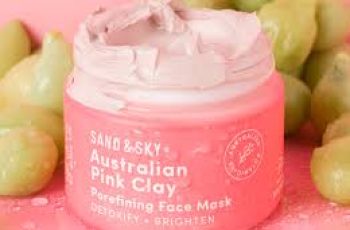
Why Is Turmeric Good for the Skin?
Turmeric is more than just a kitchen staple—it’s a powerful beauty and wellness tool that has taken the skincare world by storm.
Once known mainly for its culinary uses, turmeric is now found in everything from lattes to lotions.
Our love affair with turmeric may have started with golden milk lattes, but today it’s blossomed into something bigger.
This vibrant yellow spice is now a key player in the world of wellness and skincare.
You’ll find turmeric in health supplements, teas, natural remedies, and yes—even in teeth-whitening treatments.
Its transformation from a cooking ingredient to a skincare essential is nothing short of impressive.
So what exactly makes turmeric such a wonder ingredient for the skin? Let’s break it down and dive deep into the reasons why this ancient spice deserves a place in your skincare routine.
What Is Turmeric?
Turmeric comes from the root of a plant called Curcuma longa, part of the ginger family. It’s native to South and Southeast Asia, where it’s been used for thousands of years.
The part of turmeric that gives it its famous yellow color is curcumin. This natural chemical compound has been widely researched for its health benefits.
Curcumin is a potent antioxidant and anti-inflammatory agent. It helps with everything from pain relief to skin healing and even supports a healthy immune system.
Turmeric also has antibacterial properties and helps reduce skin pigmentation. It’s known for treating stretch marks, calming irritation, and adding glow to your complexion.
This spice isn’t just for food—it’s also a skincare hero. Eastern cultures have used turmeric in beauty rituals for centuries, and the Western world is finally catching on.
You’ll now find turmeric in many beauty products including face masks, serums, cleansers, and toners. Its popularity shows no signs of fading.
Skin Benefits of Turmeric
Turmeric isn’t just good for your health—it’s great for your skin, too. Let’s take a closer look at the many ways it can enhance your skincare routine.
1. Turmeric Is a Natural Anti-Inflammatory
Turmeric can soothe inflamed skin conditions like eczema and rosacea. Its anti-inflammatory properties help reduce redness and irritation, making your skin appear calmer.
Taking turmeric as a supplement may also reduce gut inflammation, which in turn improves overall skin health. Beauty truly begins from the inside out.
By supporting digestion and reducing internal inflammation, turmeric creates a ripple effect of benefits that show up as clearer, healthier-looking skin.
2. It Helps Lighten Skin Pigmentation
Dark spots and uneven skin tone are common issues caused by sun damage. Turmeric’s curcumin targets pigmentation by blocking free radicals and reducing melanin production.
While turmeric can’t erase UV damage completely, it does make dark spots appear lighter over time. It works by shielding damaged cells from further sun exposure.
Think of turmeric like a natural sun umbrella, guarding vulnerable skin from harsh rays and minimizing the darkening effects of melanin overproduction.
Used consistently, turmeric helps fade old sun spots and leaves your skin looking brighter and more even-toned.
3. It Reduces Dark Circles Under the Eyes
Dark circles are often caused by slow blood circulation and thin skin. Turmeric helps stimulate circulation in the under-eye area, reducing puffiness and discoloration.
Its anti-inflammatory powers are gentle enough for the sensitive eye region. Turmeric helps brighten and awaken tired-looking eyes naturally and effectively.
By increasing blood flow and calming inflammation, turmeric visibly improves the appearance of dark under-eye circles over time.
4. It Revives Dry and Dull Skin
Dry skin can make your complexion look tired and flaky. Turmeric helps speed up cell turnover, allowing new, fresh skin to shine through more quickly.
By hydrating the skin and supporting the natural renewal process, turmeric restores radiance and gives your skin a healthy, vibrant glow.
It also creates a protective barrier that defends against toxins and environmental damage. This ensures your new skin stays nourished and shielded from harm.
5. It Fights Acne and Blemishes
Thanks to its antibacterial and anti-inflammatory effects, turmeric is a great ally for acne-prone skin. It stops bacteria from spreading and soothes existing breakouts.
Turmeric reduces the size and redness of pimples, helping them heal faster. It also prevents future breakouts by controlling bacteria and inflammation.
Regular use of turmeric can significantly improve acne-prone skin, making it clearer, smoother, and less irritated.
6. It Minimizes the Appearance of Stretch Marks
Stretch marks occur when the skin is stretched too quickly and collagen breaks down. Turmeric helps by improving skin elasticity and promoting healing.
Curcumin-rich skincare products penetrate deep into the skin and work at the cellular level. They improve membrane function and smooth out scarred areas.
Over time, turmeric helps stretch marks appear less visible and more blended with surrounding skin. It’s a natural solution to a common concern.
7. It Promotes Faster Wound Healing
Turmeric’s antibacterial and healing properties make it ideal for treating small cuts, wounds, or scars. It speeds up tissue repair and protects from infections.
By applying turmeric-based products to damaged skin, you can promote faster recovery and reduce the chances of scarring.
Even post-acne marks or surgical scars can benefit from turmeric’s regenerative abilities when used consistently in your skincare routine.
How To Add Turmeric to Your Skincare Routine
Turmeric can be found in a variety of skincare formulas. But remember: cooking turmeric and cosmetic turmeric are not the same.
Turmeric powder used in cooking contains only about 2–9% curcumin. That’s not enough to have much of an impact on your skin—and it can leave yellow stains.
Cosmetic turmeric or extracted curcumin used in skincare is usually refined and often colorless. These versions are safe and effective for topical use.
Here are the best types of skincare products to introduce turmeric into your beauty routine:
1. Cleansers
Cleansers with turmeric are perfect for sensitive skin. They wash off quickly and still deliver anti-inflammatory benefits without much risk of irritation.
They’re a great way to test your skin’s response to turmeric before moving on to leave-on products like serums or moisturizers.
2. Serums
If you’re dealing with acne, oily skin, or dullness, turmeric-infused serums are highly effective. They deliver a concentrated dose of curcumin to problem areas.
Serums are typically lightweight and penetrate deep into the skin. They work well overnight when your skin is in repair mode.
3. Face Masks
For a full skincare treat, turmeric face masks are luxurious and transformative. They brighten the complexion, even skin tone, and leave your face feeling refreshed.
Turmeric masks combine various skin-loving ingredients for maximum impact. You get all the benefits in one deeply nourishing treatment.
Other Products to Explore
You can also find turmeric in moisturizers, eye creams, exfoliators, and spot treatments. Whatever your skin concern, there’s likely a turmeric product to match it.
Choose products based on your skin type and concerns. Whether it’s anti-aging, acne, or hydration—turmeric has a role to play.
Are There Any Side Effects?
Turmeric is generally safe for all skin types. However, it’s important to use cosmetic-grade turmeric to avoid staining or irritation.
Always patch-test a new product on a small area of your skin before applying it to your face. This helps ensure you won’t have an allergic reaction.
If you’re taking turmeric supplements, check with a doctor first. Although natural, turmeric can interact with medications or affect certain health conditions.
Final Thoughts
Turmeric is one of the few ingredients that works both internally and externally to improve your skin. From reducing inflammation to fading dark spots, it’s a true skincare multitasker.
Whether you drink it, apply it, or take it as a supplement, turmeric delivers benefits that are hard to ignore. Plus, it’s natural, affordable, and backed by centuries of use.
With proper use, turmeric can bring out the best in your skin—making it glow with health and radiance. So, why not give this golden wonder a spot in your routine?
And if you’re already a turmeric fan, share your experience with us on Instagram. We’d love to hear how turmeric has helped you on your skincare journey.


